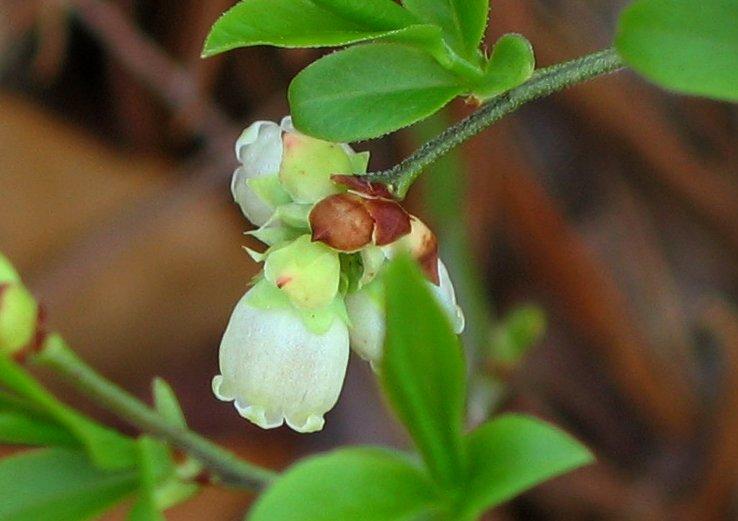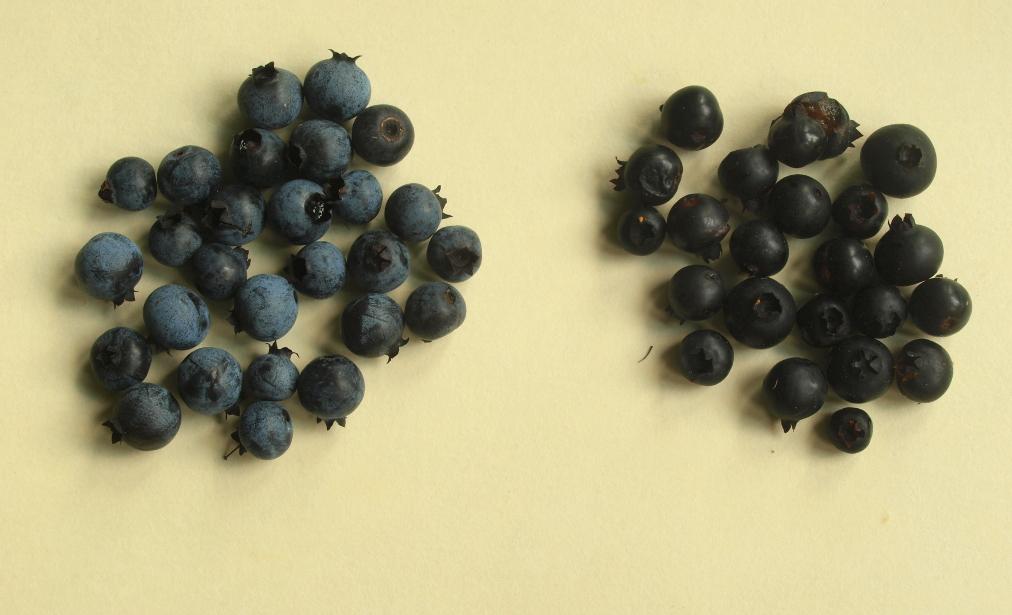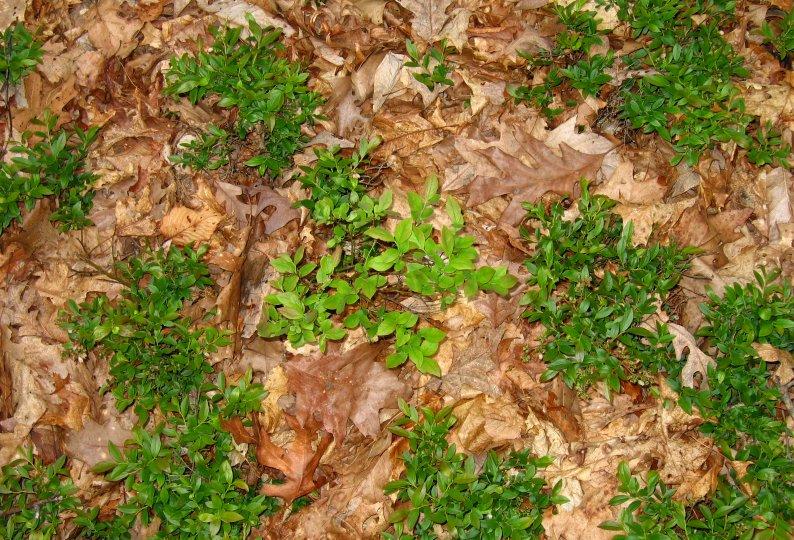Lowbush Blueberry
Vaccinium angustifolium
Lowbush blueberry is native to northeastern and eastern North America, reaching south to the Great Smokies and west to the
Great Lakes. This deciduous shrub forms extensive clumps not taller than 1 ft. It does best in well-drained open areas, on
acidic sandy, peaty, or rocky soil, actively recovering and becoming especially productive after fires. Native Americans regularly
used fire for stimulating lowbush blueberry production. Its rhizomes can stay dormant up to a whole century and then sprout
if provided adequate light and soil moisture. The small white bell-shaped flowers develop into sweet-acidic dark blue or black
berries, which are high in vitamin C, dark pigments, and dietary fiber. Full of antioxidants and flavonoids, they are known
to provide multiple health benefits: anti-aging effects, cancer-inhibiting, and improving heart, urinary tract, and vision
health. Lowbush blueberry is produced commercially in Canada and New England, mainly harvested from managed wild patches.
Harvesting season begins in August and continues until late September. It is a favorite of black bears, coyotes, raccoons,
foxes, porcupines, white-tail deer, birds, and certainly recreational berry pickers.

Flowers start opening just after the leaves. April 21

Blue and black fruit collected in the same population. August 3

Lowbush blueberry with a single hillside blueberry in the center. May 17